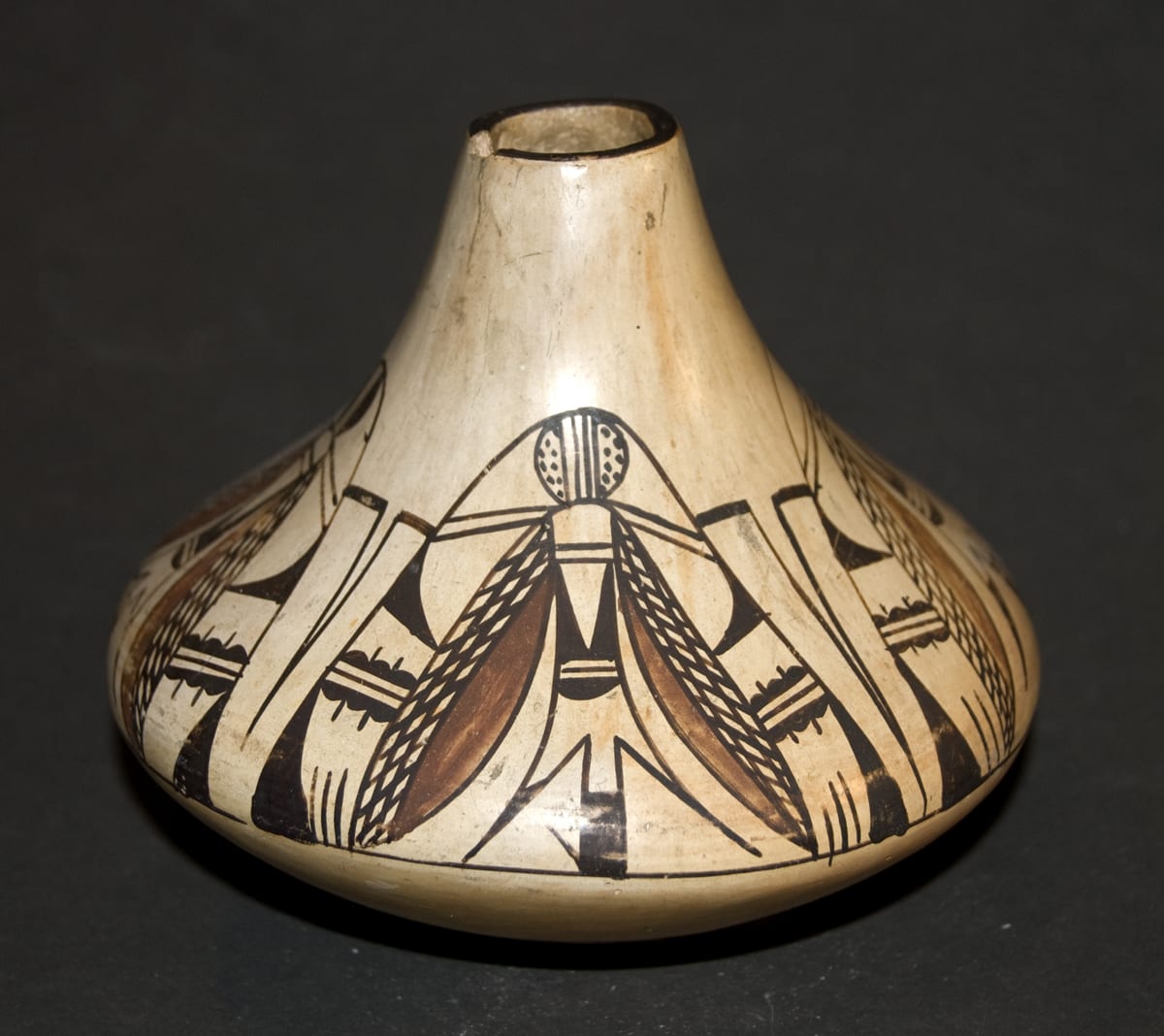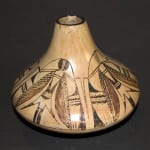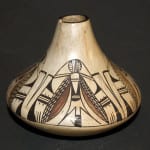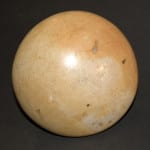The design is monochromatic, except for the inner curved area of each wing, which is dark rust red. The small opening has a small chip in the rim with a slight crack running from it. There is some wear to the design, particularly in one quadrant. I believe this design (ca. 1902-1906) is unique to Nampeyo, but even for her it is unusual.
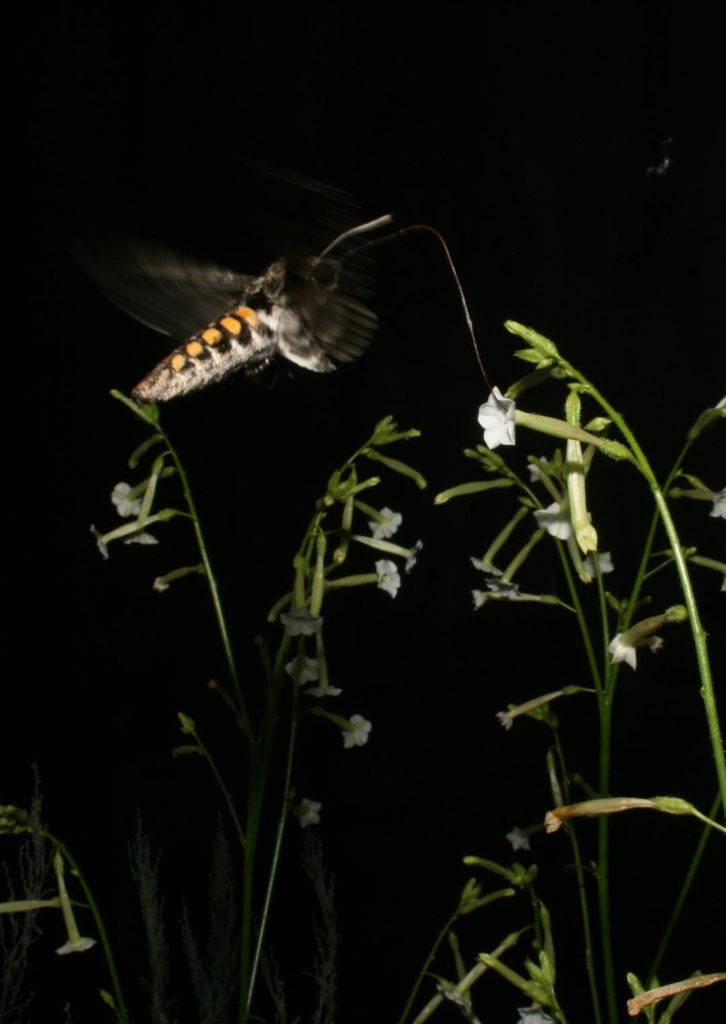
Hawk moth feeding on tobacco plant flower.
Addendum: Since I wrote this, I became aware of a jar with similar design by Hisi, which is now part of the collection (see 2008-12).
I know of about nine examples of this design by Nampeyo other than 2008-06. All are painted on wide-shouldered jars, since the design requires a substantial canvas. The design is complex and the elements show only minor variations across the known examples. (See note, below.) Judging from the photographs, the designs on three published examples seem identical: Adobe Gallery, 1983:2, #1; Struever, 2001:103; and Struever, 2008:14. The Adobe Gallery jar may have been bought by Barbara and Jim Kramer and then resold through the gallery some years later. The seedpot offered by Struever in her 2008 summer show seems identical to a pot previously offered by Four Winds Gallery, Pittsburgh (American Indian Art Magazine, Vol. 33, #3, Summer 2008, inside back cover). [Struever brochure with photograph on file.] Sales records are not generally shared, so it is difficult to know if we are speaking about the same pots here. A moth jar was sold at live auction in 2007 for $8,500. Also in 2007 a 10.5” diameter moth jar by Nampeyo with “a chipped rim, hairline cracks throughout” was sold by Cowan’s for $9,775. Later that year, an intact moth jar 5.25” high and approximately 8 inches wide was sold (lot #429, 11/23-24/07 sale) by Garth’s Auction, Ohio for $10,925 with a pre-auction estimate of $4,000 to $6,000. [Auction photographs on file.] In October 2008, Steve Elmore offered a 10.5” pot that he dates c. 1900 and looks very much like the Streuver and Four Winds pots. [listing on file.] On 1/15/11 Skinner sold a 5.75 h X 10” w version of this design for $9,500. (Photos on file.) There is so little variation in design that it’s hard to count ‘em.
Note: An exception to this uniformity of design is a redware seedpot offered by Andrea Fisher in 2001. While basically similar to the pots discussed above, the design on this pot is relatively simple and a bit clunky. [Photograph on file.].
After the eBay auction for 2008-06 closed, I was contacted by Ginny in California who has a somewhat larger jar of very similar shape and design. The moths on her jar lack the detailed body elements seen on the other examples and all four have two solid bifurcated circles for heads, but the spirit of the jar is the same as the other examples. [Photo on file with 2008-06.] Her jar was purchased at a Marysville, CA antique shop in the early 1990s. Pot 2008-06 and Ginny’s jar are smaller than the other known examples of jars with this design.
One variation in design on 2008-06 is that the four moths have three different styles of heads: two have the solid black bifurcated circles seen on the Adobe Gallery and Wheelwright examples, one moth has a circular heard with dots, and one lacks a circular head, and instead displays four parallel lines. Among the half-dozen Nampeyo moth pots reviewed, these last two head designs are unique to pot 2008-06. Circular heads without dots or solid paint are seen on the Garth, Four Winds, and Struever bowls, but not on 2008-06.
In all cases where I can see, the overall design of these moth pots lacks framing lines, except for a thin along the bottom of the design that separates it from the undecorated lower quadrant of the bowl. As near as I can tell, 2008-06 is unique in that the small rim of the jar has been painted.
To my eye, the overall design of the moth design is far more intricate, structured, and detailed than what is typical of Nampeyo’s work. Often, her designs seem more impulsive and less controlled than is seen here and on similarly painted pots. The painted portion of 2008-06 is framed by about an inch of undecorated surface both above and below the design, an iconic Nampeyo technique.

